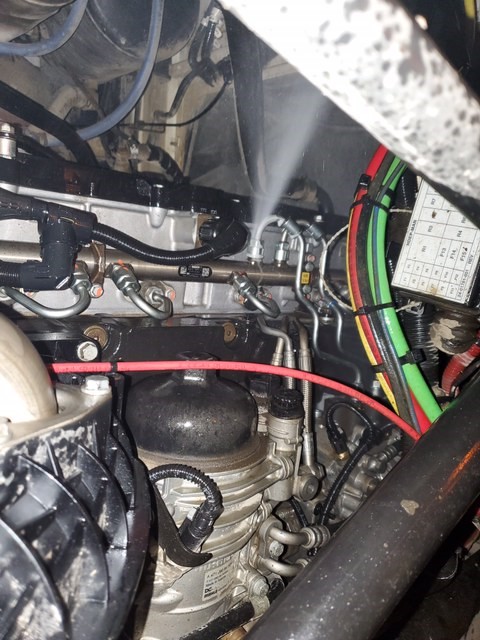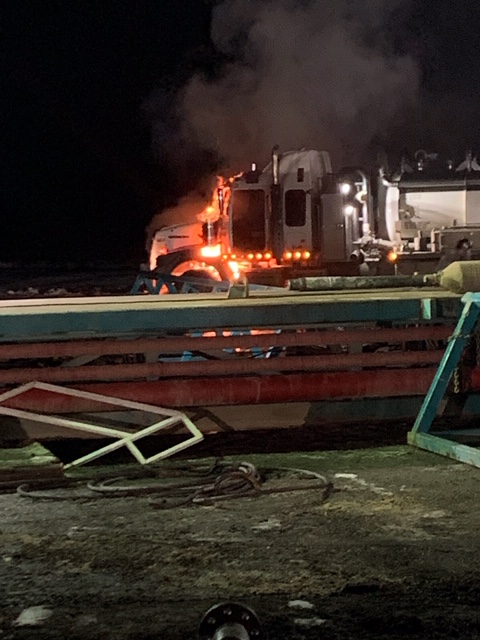When ‘All Systems Normal’ Fails: How Missed Inspections and Overreliance on Telematics Are Fueling Preventable Fires
It Was a Routine Start—Until the Fireball Lit the Sky A Class 8 vacuum truck had completed its regular inspection. The dashboard reported ALL SYSTEMS NORMAL. The operator, confident in the clean telematics report, set out on a short-haul route through a regional municipality.
What the dashboard didn’t show:
A fine, high-pressure stream of diesel spraying from a compromised line inside the engine compartment. • Heat accumulating near the turbo housing.
No visual walkaround to detect fluid pooling below the vehicle with the engine running.
No documentation of recent engine vibration or previous minor faults logged—and therefore never investigated.
Minutes later, the truck was fully engulfed in flames.
The fire exposed not just the physical failure—but a procedural one: an overreliance on digital monitoring and an underperformance in human inspection.


The cost?
- Over $450,000 in vehicle and cargo loss
- Emergency HAZMAT response
- Missed subrogation due to incomplete pre-trip logs
Environmental reporting requirements to the regional authority
This wasn’t a fluke—it’s a pattern. We’ve seen similar failures across multiple fleets and platforms, and the root cause often traces back to procedural gaps, not spontaneous combustion.
The Compliance Illusion Telematics dashboards give a false sense of security. NSC Standard 13 and FMCSA rules still require manual inspections. Operators and carriers are still legally accountable regardless of what the dashboard says.
Telematics are valuable tools—but only when used to supplement, not replace, human inspection and mechanical due diligence.
What the Fires Reveal
- Evidence from investigations: fuel leaks, electrical corrosion, thermal stress—all visible pre-fire
- Daily inspection logs often incomplete or clearly skimmed
- Fire patterns point to systemic neglect, not sudden failure
Telematics vs. Responsibility
- The role of data : support, not substitution
- Why software can’t detect physical symptoms like hose wear, fluid pooling, or burned connectors
- Legal exposure when relying solely on digital diagnostics
Regulatory Expectations
- Summary of NSC Standard 13 (Canada) and 49 CFR §396 (U.S.)
- NSC Standard 13 requires daily pre-trip inspections, including visual and physical checks of the exhaust, fuel, and cooling systems.
- FMCSA 49 CFR §396 mandates that no vehicle with a known safety defect may be operated until it is repaired—a condition often breached when dashboard data is trusted over direct inspection.
- Provincial parallels in Ontario and BC
- Real-world consequences: fines, civil liability, missed subrogation
What Fleets and Lessors Should Be Doing
- Reintroduce the importance of physical inspections
- Training operators on what matters—and what gets missed
- Documenting issues, acting on alerts, and preserving evidence post-fire
- Where specialists are needed, get them hired and retained for fire prevention
What’s the next step? Review your inspection protocols, retrain staff if necessary, and audit recent fire or breakdown incidents for missed warning signs. If internal capacity is limited, engage a qualified forensic partner to support prevention and compliance.
Conclusion: “Fire doesn’t begin with a spark—it begins with something missed.”
At IGNISOC, we don’t just investigate vehicle fires—we help prevent the next one. From identifying root causes and revealing overlooked inspection failures to guiding regulatory compliance strategies, we provide fleets, insurers, and municipalities with what matters most: actionable insight before the next loss.
When the fire’s out, the real work begins. We’re ready when you are.
